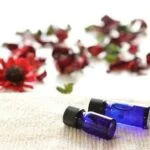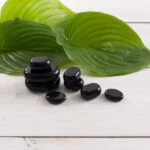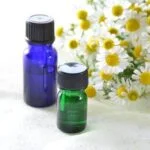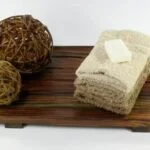Aromatherapy body wraps have become increasingly popular in the wellness industry, offering a unique and holistic approach to relaxation and rejuvenation. Combining the therapeutic benefits of essential oils with the soothing effects of a full-body wrap, these treatments provide a revitalizing experience for both the mind and body. In this article, we will delve into the concept of aromatherapy body wraps, exploring their origins, understanding the science behind them, and discussing their various types and benefits.
Aromatherapy body wraps offer a fusion of two ancient practices – aromatherapy and body wraps – that have stood the test of time for their healing properties. Aromatherapy itself dates back to ancient civilizations, where essential oils were utilized for their medicinal qualities.
The practice involves using concentrated plant extracts to promote physical and mental well-being. On the other hand, body wraps have evolved over time from traditional rituals aimed at detoxification to modern spa treatments that help nourish and hydrate the skin.
The science behind aromatherapy lies in its ability to harness the power of essential oils. When applied to the skin during a body wrap session, these aromatic molecules are absorbed by the body’s systems, triggering different responses depending on the oil used.
The process not only enhances relaxation but can also aid in improving circulation, relieving pain, rejuvenating the skin, reducing stress levels, and more. With a wide variety of essential oil blends available for specific purposes such as relaxation or detoxification, there is an aromatherapy body wrap suited for every individual’s needs.
History of Aromatherapy and Body Wraps
The history of aromatherapy and body wraps is fascinating and dates back centuries. Aromatherapy, the use of aromatic plant extracts for healing purposes, can be traced back to ancient civilizations such as Egypt, China, and India. These cultures believed in the therapeutic properties of essential oils and used them for medicinal and spiritual practices.
In ancient Egypt, essential oils were highly valued and used in various aspects of life, including embalming rituals and beauty treatments. The Egyptians believed that the scents from these oils had magical powers to heal both the body and the soul. They even created perfume bottles made from precious materials to store their essential oils.
Similarly, in China, aromatherapy was practiced as early as 2700 BC. Chinese medical texts emphasized the importance of using fragrances to balance the energy flow within the body. They believed that certain scents could help restore harmony and promote overall well-being.
In India, aromatherapy was an integral part of Ayurvedic medicine. Essential oils were used for their medicinal properties and were believed to have a profound effect on physical, mental, and emotional health. Ayurvedic practitioners used aromatic herbs, spices, and oils in massages, baths, and inhalations to address various health concerns.
Body wraps also have a long history that can be traced back to ancient times. The Greeks and Romans practiced a form of body wrapping known as “sudation” where individuals were wrapped in heated blankets soaked in fragrant herbal concoctions. These wraps were believed to detoxify the body and improve overall wellness.
Over time, the practices of aromatherapy and body wraps merged together to create what we now know as an aromatherapy body wrap. Today’s modern spas offer a variety of options for aromatherapy body wraps using different techniques and blends of essential oils.
To summarize, the history of aromatherapy and body wraps is deeply rooted in ancient civilizations across different parts of the world. The use of essential oils for their therapeutic properties and body wraps for detoxification purposes have been embraced for centuries. This rich history has contributed to the popularity and widespread use of aromatherapy body wraps in the wellness industry today.
| Key Points |
|---|
| – Aromatherapy dates back to ancient civilizations like Egypt, China, and India. |
| – Essential oils were used for medicinal and spiritual purposes. |
| – Body wrapping practices trace back to ancient Greece and Rome. |
Understanding the Science Behind Aromatherapy Body Wraps
Aromatherapy body wraps have gained popularity in the wellness industry due to their soothing effects and therapeutic benefits. Understanding the science behind these wraps helps to explain why they are so effective in promoting both physical and mental well-being.
One of the key components of aromatherapy body wraps is the use of essential oils. These oils are derived from plants and contain concentrated aromatic compounds that have various therapeutic properties. When applied to the skin during a body wrap, these essential oils can be absorbed into the bloodstream through the skin’s pores.
The absorption of essential oils occurs because they are made up of small molecules that can easily penetrate the skin barrier. Once in the bloodstream, these molecules travel throughout the body and interact with different systems, such as the nervous system, immune system, and respiratory system. This interaction results in a range of physiological effects, including relaxation, pain relief, improved circulation, detoxification, and enhanced mood.
In addition to their direct effects on the body’s systems, essential oils used in aromatherapy body wraps also have an indirect effect on our emotional well-being. The olfactory system in our brain is directly linked to our emotions and memories. When we inhale the aroma of essential oils during a body wrap, it stimulates this olfactory system and can elicit positive emotional responses such as relaxation and stress reduction.
Understanding this science behind aromatherapy body wraps helps to demystify their effects on our mind and body. Whether you choose to visit a professional spa or create a DIY experience at home, harnessing the power of essential oils through aromatherapy body wraps can be a holistic approach to improving your overall well-being.
| Therapeutic Properties of Essential Oils | Effects on Body Systems |
|---|---|
| Relaxation | Interacts with the nervous system to promote relaxation and reduce stress |
| Pain Relief | Targets pain receptors and helps alleviate discomfort |
| Improved Circulation | Enhances blood flow and promotes better oxygenation of tissues |
| Detoxification | Aids in the elimination of toxins from the body |
| Enhanced Mood | Stimulates the olfactory system, triggering positive emotional responses |
Different Types of Aromatherapy Body Wraps
When it comes to aromatherapy body wraps, there are various types to choose from, each offering its own unique benefits and experience. These different types of wraps use specific essential oil blends and ingredients to target various concerns, such as relaxation, stress relief, and detoxification. Understanding the differences between these types can help individuals find the one that best aligns with their needs and preferences.
Mud Wraps
Mud wraps involve using a mixture of mineral-rich mud or clay combined with essential oils to create a thick paste. This paste is then applied to the entire body before being wrapped in a film or cloth for a designated period of time.
Mud wraps are known for their detoxifying properties, as they help draw out impurities from the skin and stimulate circulation. The combination of mud and essential oils also provides nourishment to the skin, leaving it feeling soft, moisturized, and rejuvenated.
Seaweed Wraps
Seaweed wraps utilize seaweed extracts or dried seaweed sheets soaked in warm water infused with essential oils. The seaweed is then applied all over the body before being tightly wrapped in plastic or cloth. Seaweed is rich in vitamins, minerals, and antioxidants that promote detoxification and improve the appearance of the skin. The heat from the wrap enhances absorption while stimulating blood flow, helping to reduce cellulite and improve the overall texture of the skin.
Clay Wraps
Clay wraps involve applying a mixture of clay powder blended with essential oils onto the entire body before being wrapped up in a film or cloth. Clays like French Green Clay or Bentonite Clay are commonly used due to their purifying properties. Clay has an incredible ability to draw out toxins from the skin while replenishing it with minerals. Essential oils added to the clay mix provide additional therapeutic benefits, such as relaxation or invigoration, depending on the chosen blend.
In addition to these commonly-found body wraps, there are other variations available in spas and wellness centers. Some may incorporate exotic ingredients like chocolate, coffee, or honey for an indulgent experience.
It is essential to consult with a professional or therapist who can advise on the most suitable type of aromatherapy body wrap based on individual needs and preferences. Whether it’s a mud wrap, seaweed wrap, clay wrap, or any other variation, these different types of aromatherapy body wraps provide unique sensorial experiences while offering numerous benefits for both the mind and body.
How Aromatherapy Body Wraps Work
Aromatherapy body wraps offer a luxurious and relaxing experience that can help promote overall well-being. Understanding the step-by-step procedure of how these wraps work can help individuals feel more informed and prepared before they undergo a session. Here is a breakdown of the process involved in an aromatherapy body wrap:
1. Preparing the Skin:
Before applying the body wrap, it is essential to prepare the skin by exfoliating. This step helps to remove any dead skin cells and allows for better absorption of the essential oils used in the treatment. Typically, a gentle scrub or dry brushing technique is used to exfoliate the skin and enhance its receptiveness to the benefits of aromatherapy.
2. Applying Essential Oils:
Once the skin is prepared, trained therapists will proceed to apply a specialized blend of essential oils onto the body. These oils are carefully selected for their specific therapeutic properties and are often diluted with a carrier oil for safe application. The therapist may use different application techniques such as gentle massage or long strokes to ensure even distribution and absorption of the oils.
3. Wrapping the Body:
After applying the essential oils, it’s time to wrap the body. A thin sheet or cloth soaked in warm water may be wrapped around the client’s body, ensuring that it covers all areas where essential oils were applied. The purpose of this step is to create a warm and moist environment that aids in enhancing absorption while promoting relaxation.
4. Resting Period:
Once wrapped, clients typically rest for around 20-30 minutes. During this time, they may be encouraged to relax or meditate, allowing their bodies to absorb the beneficial properties of both essential oils and heat therapy from being wrapped.
5. Unwrapping and Hydration:
After the resting period, it’s time to remove the wraps gently. The therapist will unwrap each part of your body systematically, taking care not to disturb any residual oil on your skin. Following the removal of wraps, moisturization is essential to keep the skin hydrated and lock in the benefits of the treatment. The therapist may apply a soothing lotion or hydrating product to replenish moisture in the skin.
By following these steps, aromatherapy body wraps create a holistic experience that combines the healing powers of essential oils with heat therapy and relaxation techniques. Each step is carefully designed to maximize the absorption and benefits of the essential oils used, resulting in a rejuvenating and soothing treatment for both the mind and body.
Benefits of Aromatherapy Body Wraps for Health and Wellness
Aromatherapy body wraps offer a range of benefits for both physical and mental health. By combining the therapeutic properties of essential oils with the nourishing effects of body wraps, these treatments can promote overall well-being and relaxation. In this section, we will delve into the potential advantages that aromatherapy body wraps can provide for individuals seeking to improve their health and wellness.
Physical Benefits
One of the primary physical benefits of aromatherapy body wraps is improved circulation. As the body is enveloped in a warm wrap infused with essential oils, heat from the wrap helps to dilate blood vessels, allowing for better blood flow throughout the body. Increased circulation can aid in delivering oxygen and nutrients to tired muscles, promoting healing and reducing muscle tension.
Another physical benefit is pain relief. The combination of essential oils’ analgesic properties with the comforting warmth of a body wrap can help alleviate discomfort associated with conditions such as arthritis or muscle soreness. Essential oils such as lavender or eucalyptus have been known to have anti-inflammatory properties that can soothe achy joints and reduce inflammation.
Additionally, aromatherapy body wraps can rejuvenate the skin. The application of essential oils during a wrap session helps nourish and moisturize the skin, leaving it feeling soft, supple, and refreshed. Certain essential oils like tea tree oil or chamomile are known for their antibacterial properties, enabling them to assist in treating common skin conditions like acne or eczema.
Mental Health Benefits
In addition to physical benefits, aromatherapy body wraps contribute positively to mental health by providing stress reduction and improved relaxation opportunities. The aromatic molecules from essential oils used during a wrap session stimulate receptors in the nose that send signals to your brain’s limbic system – an area responsible for emotions and memories.
This olfactory stimulation triggers responses that help induce relaxation, reduce anxiety, and improve mood. Essential oils such as lavender or bergamot are renowned for their calming effects and can help individuals achieve a state of tranquility during a body wrap session. The soothing aromas combined with the comforting feeling of being wrapped can create a serene environment conducive to stress relief and mental well-being.
Moreover, the overall experience of an aromatherapy body wrap can also contribute to improved mental health. Taking time out of one’s busy schedule to indulge in this self-care practice allows individuals to disconnect from external stressors and focus on their physical and mental well-being. The quiet and peaceful ambiance of a spa or home setting further enhances relaxation, aiding in the release of tension and fostering inner calmness.
Aromatherapy body wraps have been praised for their ability to promote both physical and mental well-being. By improving circulation, relieving pain, rejuvenating the skin, reducing stress, and encouraging relaxation, these treatments offer a holistic approach to health and wellness. Whether you are seeking relief from physical discomfort or simply some much-needed pampering, aromatherapy body wraps provide an indulgent avenue for achieving harmony between mind and body.
Safety and Precautions When Undergoing an Aromatherapy Body Wrap
When undergoing an aromatherapy body wrap, it is essential to prioritize safety and take necessary precautions to ensure a positive and beneficial experience. While aromatherapy body wraps are generally safe and well-tolerated, there are a few potential risks and contraindications to consider.
Firstly, individuals with allergies or sensitivities to certain substances should exercise caution when choosing their essential oils and ingredients for the body wrap. It is crucial to carefully read labels and consult with a professional or healthcare provider if you have any known allergies or concerns. Additionally, if you have any existing medical conditions such as asthma, eczema, or skin infections, it is recommended to consult with your healthcare provider before undergoing an aromatherapy body wrap.
Furthermore, pregnant women should exercise extra caution when considering an aromatherapy body wrap. Some essential oils may not be safe for use during pregnancy or can cause adverse effects on both the mother and the baby. It is best to consult with a prenatal care provider before proceeding with any form of aromatherapy during pregnancy.
To ensure a safe and enjoyable experience, it is advisable to select a reputable spa or therapist who specializes in aromatherapy treatments. Look for professionals who are knowledgeable about different essential oils, their properties, and their safe usage. Before scheduling an appointment, ask about their qualifications and certifications related to aromatherapy.
DIY Aromatherapy Body Wraps
For those who prefer the comforts of home or are looking for a more affordable option, DIY aromatherapy body wraps offer a fantastic opportunity to create your own spa experience. With just a few simple ingredients and essential oils, you can enjoy the benefits of an aromatherapy body wrap in the comfort of your own space.
To begin your DIY aromatherapy body wrap, it’s important to gather the necessary supplies. You will need essential oils of your choice, such as lavender for relaxation or eucalyptus for detoxification, as well as carrier oils like almond or jojoba oil. Additionally, you’ll need ace bandages or plastic wrap to secure the wrap and promote heat retention.
Once you have your supplies ready, it’s time to prepare the mixture. For example, if you’re creating a stress-relief wrap, you can mix a few drops of lavender essential oil with carrier oil until well blended. It’s important to remember that essential oils are potent and should be used sparingly.
Next, exfoliate your skin before applying the wrap. This step helps remove dead skin cells and allows for better absorption of the essential oils. You can use a gentle scrub or make one at home by combining sugar or salt with a carrier oil.
After exfoliation, apply the prepared mixture onto your desired areas using gentle circular motions. Once applied evenly, wrap these areas with ace bandages or plastic wrap to hold everything in place securely. To enhance the therapeutic effects, consider adding extra layers of towels on top or covering yourself with a warm blanket.
During the application period, typically around 30 minutes to an hour, take this time to relax and unwind. Consider playing calming music or practicing deep breathing exercises to further enhance relaxation.
After the recommended time has passed, gently remove the bandages or plastic wrap and rinse off any remaining mixture in the shower. It’s important to remember to moisturize your skin after removing the wrap, as the treatment may have a slightly drying effect.
Creating a spa experience at home with DIY aromatherapy body wraps not only provides convenience but also allows you to tailor the experience according to your preferences and needs. Whether you’re seeking relaxation, stress relief, or detoxification, experimenting with different essential oil blends and techniques can help you find the perfect recipe for your ultimate spa-like experience at home.
Conclusion
In conclusion, aromatherapy body wraps offer a luxurious and rejuvenating experience that provides numerous benefits for both the mind and body. Throughout this article, we have explored the concept of aromatherapy body wraps, traced their historical roots, understood the science behind them, and discussed various types and procedures. We have also examined the potential health benefits they offer, as well as the safety precautions to consider.
Aromatherapy body wraps are more than just a spa treatment; they can be a powerful tool for promoting overall well-being. The combination of essential oils and the wrap itself creates a sensory experience that relaxes the mind and soothes the body. Whether you choose to indulge in a professional session or create your own DIY wrap at home, embracing this practice allows you to tap into its holistic benefits.
By improving circulation, promoting pain relief, rejuvenating the skin, reducing stress levels, and providing relaxation, aromatherapy body wraps contribute to our physical and mental health. Additionally, there are numerous testimonials and scientific studies that support these claimed benefits. It is important to note that while these treatments are generally safe for most individuals, it is always advisable to consult with a professional before undergoing any treatment. This ensures that any potential risks or contraindications specific to you are considered.
Frequently Asked Questions
What are the benefits of aromatherapy body wraps?
Aromatherapy body wraps offer numerous benefits for both the mind and body. Firstly, the essential oils used in aromatherapy have distinct therapeutic properties that can help promote relaxation, reduce stress, and uplift the mood. When applied on the skin during a body wrap, these oils are absorbed, allowing their beneficial properties to be delivered throughout the body.
Additionally, body wraps can help to detoxify and moisturize the skin, leaving it feeling smooth and rejuvenated. They can also assist in reducing muscle tension and inflammation, providing relief for sore muscles or joints.
What do they do during a body wrap?
During a body wrap treatment, there are typically several steps involved to maximize its effectiveness. The process usually begins with the application of an exfoliating scrub to remove dead skin cells and prepare the skin for absorption. Afterward, a nourishing mixture containing various ingredients such as clay, algae, herbs, or other natural substances is applied generously all over the body.
This mixture is often combined with essential oils chosen specifically for their therapeutic benefits or fragrance. Next, the body is tightly wrapped using either plastic or cloth bandages to enhance penetration and retention of moisture. Some spas may include additional steps like a massage or heat application during this time to further enhance relaxation.
How long do body wrap results last?
The duration of body wrap results can vary depending on various factors such as individual metabolism, lifestyle choices, and skincare routine after the treatment. Generally speaking, immediate results such as improved skin texture and hydration can be noticeable right after a body wrap session due to increased moisture absorption from the products used during treatment. These effects typically last for a few days up to a week following the session.
However, long-term benefits like stress reduction or detoxification may require regular treatments over an extended period of time to maintain their effects. It’s important to note that proper skincare habits such as moisturizing regularly and staying hydrated can help prolong the positive results achieved from a body wrap treatment.

Are you looking for a natural way to improve your health and wellbeing?
If so, aromatherapy may be the answer for you.





